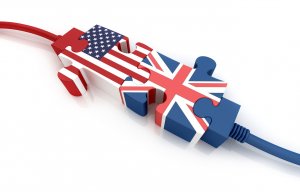
Amazon boycott likely to spread
Failure of services impacted more than 1,000 companies and could cost businesses and retailers billions.

21st October 2025
Innovation in Textiles
|
United Kingdom
Yesterday’s outage of Amazon Web Services (AWS) disrupted access to banks, airlines social media platforms and delivery apps. UK home delivery specialist Parcelhero says that when a similar event happened last year at Crowdstrike, it cost $5.4 billion in losses for Fortune 500 companies and impacted a wide variety of companies globally.
“Yet again, global e-commerce businesses and services have been reminded how fragile the online ecosystem really is, when so many companies are reliant on a handful of key service providers,” says Parcelhero head of consumer research David Jinks. “In a 2024 survey, 76% of global respondents reported that they ran applications on AWS and 48% of developers used its services. Snapchat, Reddit and Lloyds Bank are among the apps and websites impacted by today’s failure and Downdetector reports the AWS outage has affected more than 1,000 companies.
“Even if e-commerce companies and delivery organisations escaped the direct impact of the AWS outage, payments may have failed due to banking problems and other issues.
“With airline systems being reportedly impacted, there could also be global supply chain problems, as much of the world’s airfreight is carried in the hold of passenger airliners. So far, the impact on airlines seems limited to minor delays, but during the Crowdstrike outage, both airports and ports were affected.
“Yesterday’s outage is thought to have occurred initially at Amazon's US-EAST-1 region in Virginia, its original and largest web services location. Even though the initial issue that caused the problem was reportedly fixed within hours, the ongoing problems could affect some companies for many more hours if not days.
“Parcelhero’s international services use all the leading global courier networks. If there is an issue with one international carrier’s services, customers will be able to select from many other operators.”

Business intelligence for the fibre, textiles and apparel industries: technologies, innovations, markets, investments, trade policy, sourcing, strategy...
Find out more